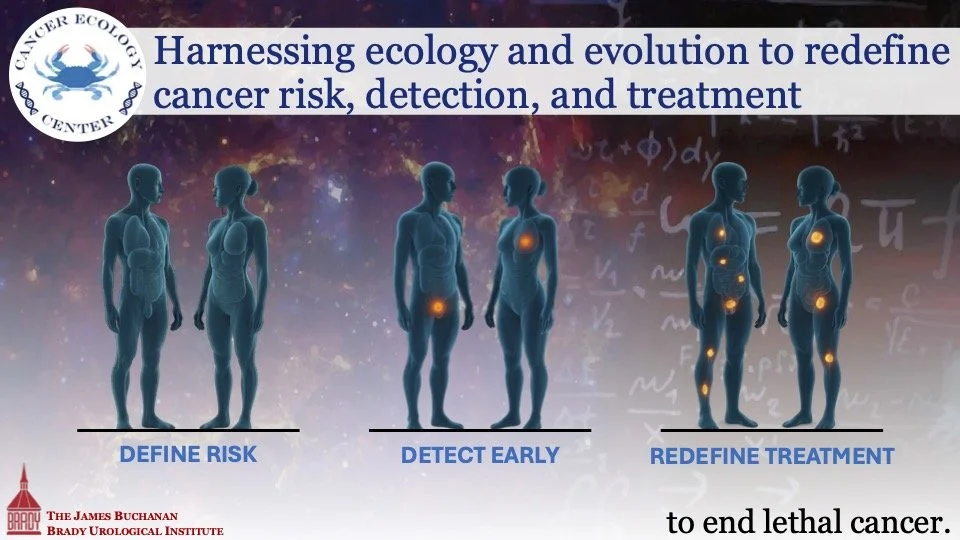Harnessing ecology and evolution to redefine cancer risk, detection, and treatment
Cancer ecology enables us to predict, detect, and intercept lethal cancer.
Our fundamental approach
Our Audacious mission is to cure cancer. Despite decades of research, cancer kills more than 10 million people worldwide annually. While cancer is cured if found locally, metastatic disease remains incurable because cancer cells in a tumor develop resistance to all known natural and synthetic compounds. We are utilizing ecologic and evolution biology principles to define a person’s risk of developing cancer, how to detect cancer while it is still localized and curable with surgery or radiation, and to redefine treatments for metastatic, resistant disease.
Using ecological principles, we have assembled multidisciplinary teams to develop novel and unique programs in risk prediction, cancer detection, and cancer treatment, Our team members include investigators drawn from several different fields, including cancer biology, evolutionary biology, ecology, geochemistry, physics, mathematics, developmental biology, protein chemistry, medical oncology, radiation oncology, stem cell biology, drug development, genomics, and immunology, all driven by this common goal.
The Cancer Ecology Consortium is a world-wide group working to cure cancer.

